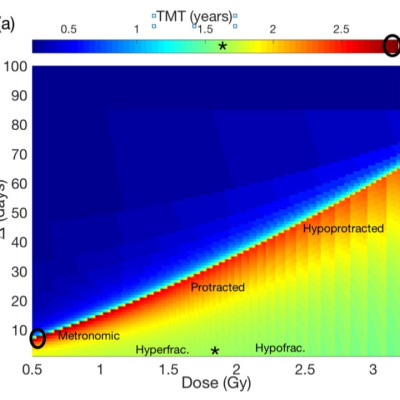Publication
Non-Standard Radiotherapy Fractionations Delay the Time to Malignant Transformation in Low-Grade Gliomas
A. Henares-Molina, S. Benzekry, P.C. Lara, M. García-Rojo, V.M Pérez-García, A. Martínez-González
PLoS One 12(6):e0178552 (2017)
MOLAB authors
Abstract
Grade II gliomas are slowly growing primary brain tumors that affect mostly young patients. Cytotoxic therapies (radiotherapy and/or chemotherapy) are used initially only for patients having a bad prognosis. These therapies are planned following the “maximum dose in minimum time” principle, i. e. the same schedule used for high-grade brain tumors in spite of their very different behavior. One of the most harmful effect of these tumors is their potential to transform into high-grade tumors what decreases significantly the patient’s life expectancy. In this paper we study mathematical models describing the growth of grade II gliomas in response to radiotherapy. We find that protracted metronomic fractionations, i.e. enlarging the time interval between low-dose radiotherapy fractions, may lead to the best tumor control whithout an increase in toxicity. Other non-standard fractionations such as protracted or hypoprotracted schemes may be also beneficial. The potential survival improvement depends on the tumor proliferation rate and can be even of the order of years. A conservative metronomic scheme, still being a suboptimal treatment, improves standard treatment results for at least 1 year for any tumor proliferation rate.














